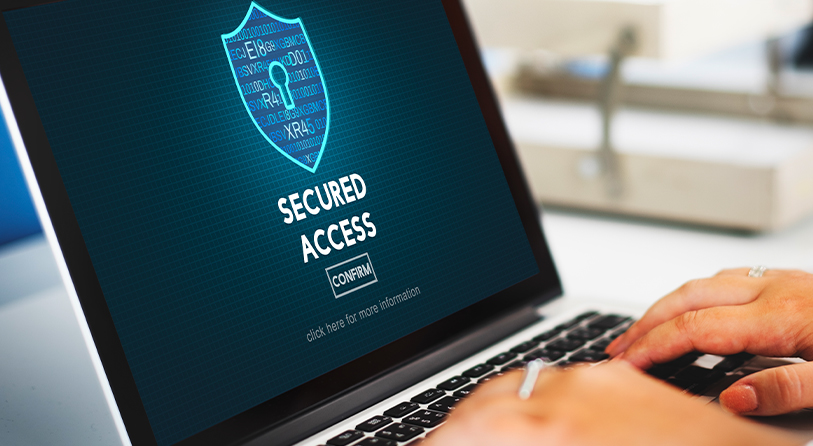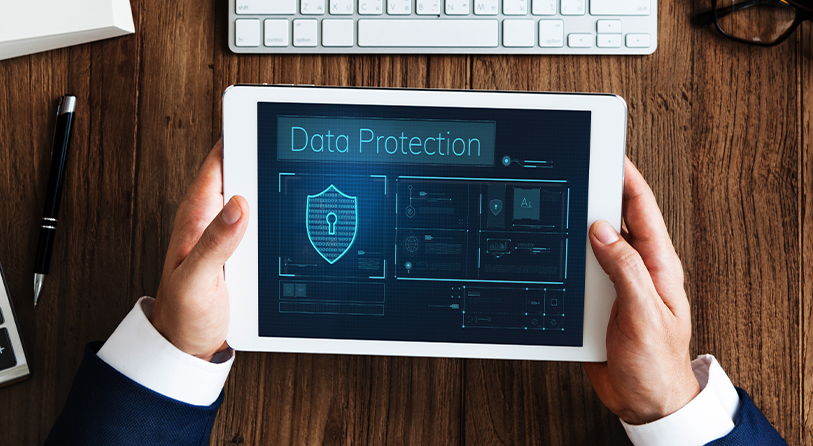The world of information technology has been growing for decades, with new advancements yielding new devices. While technology is constantly evolving, the general concept of computers has remained the same. As computer software changes, certain devices become obsolete, and new ones are created to support the new software. It has led to a somewhat vicious cycle of technological obsolescence in which a device loses relevance shortly after its inauguration in the field.
However, technology is an extremely complex industry. Several details must be considered when dealing with computers or other information technology. Technology has become so advanced that several subsects of the industry have emerged under new names. Keeping track of these terms can be difficult for those unfamiliar with such technology.
One of the most important subsects of information technology is the security used to protect such devices and the data within. This has spawned a major industry where specialists work to protect the safety of devices and networks at risk of cyberattacks. The complexity of the field and the multitude of terms can be confusing, especially when considering the terms cybersecurity and information security.
While both are essential to protecting networks and data, they are not necessarily interchangeable and cover different parts of data security. Understanding the difference, if any, between these concepts is fundamental to successfully navigating data security.

What is Cybersecurity?
Cybersecurity is one of the most important tools in modern society, especially given our newfound reliance on information technology. Virtually everything about us is available through our computers and mobile devices thanks to cloud services and cookies that store reusable information. The development of smart devices and our increased reliance on wireless networks has deepened the issue and made the security of our information more difficult to enforce.
An industry was spawned focusing on protecting networks to combat the potential threats to our personal information. This industry, the cybersecurity industry, is a mandatory asset for anyone managing sensitive information on a wireless network.
Cybersecurity is a series of precautions and programs designed to limit network access points and protect against cyberattacks. Firewalls, network monitoring, and other tools protect the information stored in digital databases. Certain aspects of cybersecurity are automated but ultimately require a team of specialists capable of identifying and countering threats before they access sensitive information.

Cybersecurity is primarily preventative, working to stop potential breaches before they occur and minimize risk. That said, cybersecurity is also reactive and will have contingencies to address an active breach.
The ideal cybersecurity system will have programs to identify breaches and alert the team. Once the team is aware of the breach, they can use the countermeasures installed to boot the hacker from the network and track the information they accessed. From there, it becomes a matter of responding to the consequences of the breach by correcting any flaws in the security system and alerting anyone affected.
When handling sensitive information, the resources afforded by a cybersecurity team are invaluable. Most people do not realize that cybersecurity is not the only facet of data protection in modern technology.
What is Information Security?
While cybersecurity is a well-known aspect of data protection, it is not the only thing we need to consider. For all its protections, cybersecurity is a narrow tool designed to fit a particular role in data protection. A network with sensitive data is one of the most valuable sources of information for cybercriminals, and they will attempt to abuse it however they can.
Typically, when we think of cyberattacks, we think of War Games-esque hacking attempts on a virtual battlefield. Unfortunately, cyberattacks are not the only tools cybercriminals can use to access private data illegally. Some criminals attempt to directly access the device where the network is stored to mitigate tracking attempts.

Fortunately, information security is a tool that helps protect private data more comprehensively. Information security focuses on accessibility restrictions and security controls to limit who can access the network physically or remotely. Information security focuses on preventing outside parties from accessing the network and limiting what information authorized users can access. Doing so prevents average users from accessing data specific to another user or department.
Information security enforces passwords, account lockouts, hardware blocks, and firewalls to prevent access to networks on a physical or digital level. The concept exists to protect the information at all costs rather than only securing the network. In doing so, information security essentially doubles the protections afforded to a network. While information security is an extremely important detail when protecting information, the question of how it differs from cybersecurity is still unclear.
What is the Difference?
At first glance, the difference between cybersecurity and information security is largely that information security places hardware protections while cybersecurity is digital. While a reasonable assessment, it is not completely accurate. Cybersecurity and information security protect digital information, but information security’s role in hardware protection is not overly different.
Cybersecurity, while separate, is part of information security and plays a key role in its implementation. While you can engage in cybersecurity practices without information security, you cannot do the inverse.
Information security is an overarching protection method incorporating cybersecurity and physical protections to safeguard important data. While certain practices and tools are exclusive to information security, there is a large overlap between the two that has left them intertwined, making it hard to perform one without the other.

Cybersecurity and information security use similar techniques to provide security to a network and generate access policies to prevent unauthorized use. Both concepts use the same model for creating security measures: confidentiality, integrity, and availability of information.
- Confidentiality: The confidentiality aspect of cybersecurity and information security is ensuring only authorized users can access the network. For cybersecurity, this usually involves the implementation of firewalls and digital security measures. For information security, there are also physical limitations, such as restricting access to certain terminals and password protections in addition to firewalls.
- Integrity: The integrity aspect involves ensuring the information present on the network is genuine and unaltered. This includes the secure transmission of data and the use of original files rather than modified ones. Tampering with information can occur remotely or directly, and cybersecurity and information security can prevent this issue.
- Availability: Finally, availability involves ensuring the files and data are readily accessible for authorized users. Barring occasional server maintenance, information security and cybersecurity tools cannot restrict access to users who have a right to the information stored on the server. The confidentiality from before ensures they cannot access other people’s data.
Aside from the overlap, the major difference between information security and cybersecurity is as follows:
- Cybersecurity: Protects a network from cyberattacks and counters ransomware and spyware.
- Information Security: Restricts unauthorized access by otherwise authorized users and establishes security protocols to prevent the data from being circulated.
While cybersecurity and information security are intertwined, they are still separate concepts. Cybersecurity remains a tool used for information security but can be done independently, whereas information security will usually use cybersecurity to automate the rest of the protections. The fact that they have differences does not mean they are not important to one another or that you can protect a network with only one of them. For the best level of protection, you will need to employ information security with cybersecurity to keep sensitive data out of the wrong hands.
While people generally understand why cyberattacks and data leaks are serious issues, keeping track of why updated practices are so important can be difficult. Many believe that the security measures used for the last 20 years are still sufficient for protecting information when the truth is quite the opposite.
Why Updating Practices Matters
Earlier, we discussed how technology evolves at such a pace that new devices and software are rendered obsolete within a short time. While this phenomenon usually results from newer products that outperform the previous entry, data protection has another reason for constantly updating its tools and practices. Ever since the first stage of cybersecurity was completed, cybercriminals looking to access information illegally have sought to bypass security measures.
As a result, modern cybercriminals have begun honing their craft to exploit certain weaknesses and loopholes in modern software and firewalls that will allow them to access the data being protected. While some software is tougher to crack than others, many cybercriminals have a small arsenal of software and hardware modified to break through.
The best analogy is that cybersecurity and information security practices are an antibiotic, and cybercriminals are akin to mutated viruses. While the medication worked on the previous strain, the new strain can circumvent the protection and access the body. In this case, the body happens to be a network storing sensitive personal or professional information.
This has led modern cybersecurity to become a back-and-forth between cybersecurity professionals and cybercriminals. One breakthrough in cybersecurity sends hackers scrambling to update their techniques and overcome the new protection. This forces the professionals to go back and improve upon what they previously accomplished.

Since 2013, the average number of breaches that successfully steal records is 3,809,448 daily. This means 44 breaches per second are successful, likely due to poorly implemented cybersecurity and information security protocols. These breaches also usually come from without, whereas there might be users within the network who are accessing information they are not supposed to for their own gain. When dealing with threats from outside your network and from within, putting together an appropriate response can be challenging.
It is because cyberattacks can come from multiple fronts that both cybersecurity and information security are essential. Both help protect from hostile access regardless of origin, though information security helps more with internal breaches, while cybersecurity is more beneficial for external breaches. An internal breach typically involves someone attempting to use their verified credentials or stealing someone else’s to access information outside their authority. External breaches are usually the result of hack attempts bypassing outdated firewalls and security portals.
Updating your cybersecurity and information security practices to fit the current software and malware will help minimize successful breaches. While managing security on this scale is important, it can also be very challenging, depending on your available resources. It can be costly to finance a department to protect against cyberattacks and might not be feasible for you at the moment. Fortunately, it is not something you necessarily have to do alone.
Technically Speaking…
Cybersecurity and information security are more closely related than you might think and have a symbiotic relationship. When protecting sensitive information, there can be no half-measures, as you cannot risk your data or those of your clients, coworkers, and family members. Once that information is in the hands of cybercriminals, it can be abused and cause irreversible damage to the victims.
By employing both techniques, you have more protection for that information, and the odds of a breach plummet to the lowest possible levels. Unfortunately, cybersecurity and information security are not something you can flip on and leave to do their job without oversight. To implement data protection successfully, you will need an active presence to monitor cybersecurity and information security software.
Those responsible must also be skilled enough to respond to breaches, apply intuitive response plans, and patch the weak point in the firewalls. Financing a cybersecurity team is costly, and doing so independently might not be an option for you.

Fortunately, funding a cybersecurity or information security team is not something you have to do with your own resources. We at U.S. Cybersecurity specialize in providing experts and protocols to help protect sensitive information from breaches. Our services include incident response, threat hunting, KMSAT, and even forensic investigation to ensure your network is as secure as possible. Protecting your network is more important than ever as more cybercriminals emerge to stake their claims.
We encourage you to visit our website, assess our services for yourself, and decide if you are ready to take the next step. We are standing by and ready to assist you with your cybersecurity needs at a moment’s notice.

